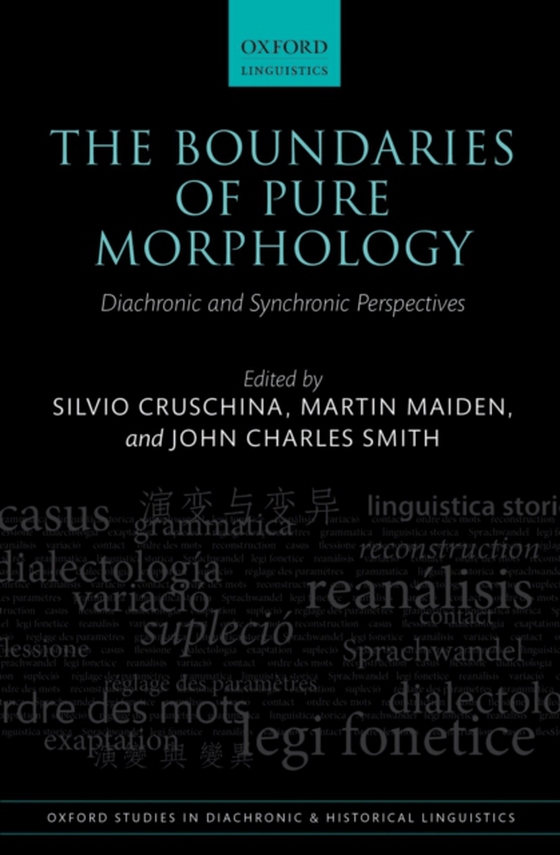
Boundaries of Pure Morphology e-bog
1313,81 DKK
(inkl. moms 1642,26 DKK)
This book brings together leading international scholars to consider whether in some languages there are phenomena which are unique to morphology, determined neither by phonology or syntax. Central to these phenomena is the notion of the 'morphome', conceived by Mark Aronoff in 1994 as a function, itself lacking form and meaning but which serves systematically to relate them. The classic exampl...
E-bog
1313,81 DKK
Forlag
OUP Oxford
Udgivet
29 august 2013
Genrer
Grammar, syntax and morphology
Sprog
English
Format
pdf
Beskyttelse
LCP
ISBN
9780191668081
This book brings together leading international scholars to consider whether in some languages there are phenomena which are unique to morphology, determined neither by phonology or syntax. Central to these phenomena is the notion of the 'morphome', conceived by Mark Aronoff in 1994 as a function, itself lacking form and meaning but which serves systematically to relate them. The classic examples of morphomes are determined neither phonologically ormorphosyntactically, and appear to be an autonomous property of the synchronic organization of morphological paradigms. The nature of the morphome is a problematic and much debated issue at the centre of current research in morphology, partly because it is defined negatively as what remains after all attempts toassign putatively morphomic phenomena to phonological or morphosyntactic conditioning have been exhausted. However, morphomic phenomena generally originate in some kind of morphosyntactic or phonological conditioning which has been lost while their effects have endured. Quite often, vestiges of the original conditioning environment persist, and the boundary between the morphomic and extramorphological conditioning may become problematic. In a series of pioneering explorations of the diachronyof morphomes The Boundaries of Pure Morphology throws important new light on the nature of the morphome and the boundary - seen from both diachronic and synchronic perspectives - between what is and is not genuinely autonomous in morphology. Its findings will be of central interest to morphologists ofall theoretical stripes as well as to all those concerned to understand the precise nature of linguistic diachrony.
 Dansk
Dansk

